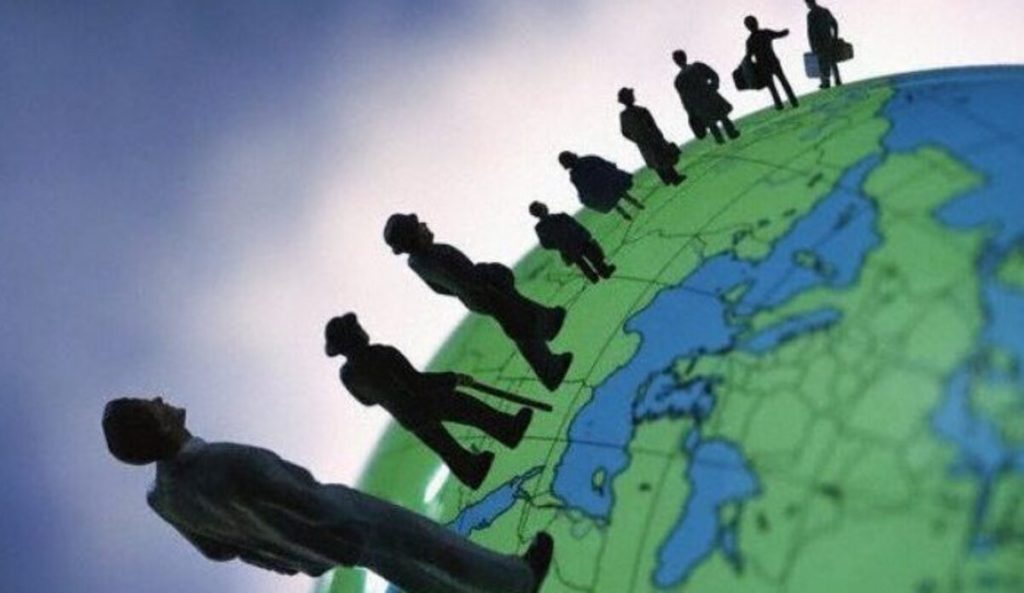Author: Elinor Zoë Karl
Dossier: Can we govern migration better?
Guest-editor: Elaine Lebon-McGregor
Abstract
Search and Rescue and disembarkation activities of EU Member States are not covered by a common EU legal framework and while border control had been increasingly Europeanized throughout the past decade, this was not the case for Search and Rescue (SAR) operations. In examining the development of the EU’s SAR policy between 2010 and 2020, this article outlines how the EU’s understanding and public presentation of SAR shifted from a necessity that saves lives to a pull factor that increases deaths; translating to an ever more restrictive SAR regime and earning the Mediterranean Sea the title of the “the deadliest migration route in the world”.
Introduction
International law imposes an obligation on mariners to provide assistance to people and ships in distress at sea. This help must be provided regardless of the person’s nationality, status or the circumstances in which they find themselves. The 1998 revisions to the Search and Rescue (SAR) Convention, ratified by all but three EU Member States (Austria, the Czech Republic and Slovakia), defines “search” as an operation to locate persons in distress, and “rescue” as an operation to retrieve persons in distress, provide for their initial medical or other needs, and deliver them to a place of safety.
Nevertheless, the International Organization for Migration’s (IOM) Missing Migrants Project has recorded the deaths of over 20,000 people in the Mediterranean Sea from the beginning of 2014 until 2020. Despite a steady decrease in absolute numbers of recorded deaths on the Mediterranean routes since its peak in 2017, the recorded deaths of the first three months of 2021 already exceed the total deaths of 2020. This increase is even more drastic in relative terms: The proportion of deaths to attempted crossings was at 0.9% in 2020 and is at 1.8% in 2021. This marks the highest death rate on the Mediterranean routes in five years. Taking into consideration that due to the lack of reliable and complete data on migrant deaths, these numbers are likely to be underestimates, the numbers indicate that the journey is becoming ever more fatal.
While the definition of SAR and its respective legal obligations have not changed, the ways in which SAR has been discussed, framed and consequently implemented in the EU context have shifted dramatically throughout the past decade. The framing of SAR as a necessary phenomenon at the beginning of the decade shifted towards a security threat by the end of the decade. This shift, however, not only took place linguistically and argumentatively but also translated into an ever more restricted EU SAR regime. Here, the EU’s 2014 decision not to take over the SAR mandate is examined as the pivotal moment which, on the one hand, was enabled by a reframing of SAR in the beginning of the decade and on the other hand allowed for the disengagement from SAR and the externalization of migration management in the later years of the decade.
SAR to Save Lives
In 2011, based on an urgent request by Italy to respond to displacement as a result of the Arab Spring and the Frontex mission “Hermes” was created. Uncharacteristically of today’s restrictive SAR regime, it is in these early days of the decade that a rather positive picture is drawn of SAR under Hermes: An increase in SAR operations is explained by the political uprisings during the course of the Arab spring and is presented as an inevitability. In Frontex’s General Report of 2011, for instance, it is stated:
‘The massive migration flows affected mostly the Central and Western Mediterranean and were triggered by the “Arab spring” and civil war in Libya. High numbers of migrants were inevitable, but the sea operations proved to be in the right place at the right time […]’ (Frontex, 2011, p.49).
The expression of having been there in the right place at the right time indicates that saving lives was the uncontested aim and, in this light, SAR is perceived as the necessary solution.
From Necessity to Security Risk – Redefining SAR
Frontex and the EU first start to distance themselves from SAR in 2012. What is often referred to as the beginning of the EU’s outsourcing of maritime border control, also marks the beginning of the EU’s linguistic distancing from SAR. The case Hirsi Jamaa and others v. Italy , in which Italy was condemned by the European Court of Human Rights for violating human rights and the principle of non-refoulement, coincided with a linguistic distancing from SAR. In 2013, Frontex for instance refers to sea migration as a cross-border crime for the first time and presents border control as its solution. Crucially, this implies a shift from saving lives being a goal in itself to becoming a legitimization for border control and foreshadows a new problem definition of irregular migration in terms of a security threat to the EU, to which SAR would inevitably become counterproductive.
A Fatal Decision from the Pedestal of the Moral High Ground
On 3 October 2013 a shipwreck nearby the Italian island of Lampedusa, where more than 300 people lost their lives, reignited the debate over the European Union’s response to the increasing numbers of asylum seekers crossing the Mediterranean Sea and motivated the creation of Italy’s SAR operation Mare Nostrum. The operation was terminated only one year after its creation but successfully Europeanized the topic of irregular sea migration. Surveillance and enforcement activities at Europe’s external borders were subsequently taken over by Frontex. In November 2014 the agency launched operation Triton. Crucially, while Frontex assumed responsibility for border and coast guarding, the Search and Rescue mandate was not taken over and remained within the responsibility of the Member States. This also meant that the SAR capacities in the Mediterranean Sea were severely curtailed.
In justifying the decision not to take over the SAR mandate, Frontex presented Mare Nostrum not only as having been exploited and capitalized on by “criminal facilitation networks” putting migrants at risk but also as responsible for increased deaths at sea by employing the later disproven pull-factor hypothesis, proposing that SAR operations increase the number of individuals attempting to cross the Mediterranean Sea. In other words, a humanitarian sentiment is evoked by presenting SAR as counterproductive to saving lives and Triton as a worthy successor of Mare Nostrum. However, not only is the morally employed pull-factor hypothesis a mere assumption at the time of the decision, even more, it was precisely the warnings about the additional risk for the lives of migrants, that the ending of Mare Nostrum and its replacement by Triton would entail, which were not taken into consideration in the 2014 decision. Instead, the decision not to take on the SAR mandate was justified with reference to the Frontex corporate identity as a border and coast guard agency but also underpinned by the EU’s self-understanding as a community with a responsibility of protecting its borders and duties relating to inter EU-solidarity. In short, the scientifically unsupported reframing of SAR as a security threat allowed for warnings about possible risks for migrants to be ignored and the disengagement from SAR to appear morally sound.
The Aftermath – Externalization and the Paradox of a Sustainable Solution
By 2016, migration was fully established as an issue of EU security and in contrast to the earlier priority of saving lives in the context of a “humanitarian crisis”, the focus was now on the successful management of a “migration crisis”. This shifted the issue from migrants dying in the Mediterranean Sea to the number of migrants arriving on Europe’s shores and consequently presented the reduction of irregular arrivals as the new humanitarian aim. Once again, a humanitarian sentiment was evoked, yet is questionable at best if it is the number of people making the journey that renders it fatal.
Nevertheless, the externalization of the EU’s migration management presented a legitimate solution to the EU. A Libyan Search and Rescue Region was set up the EU started training Libyan Coast Guards so that migrant boats could be intercepted in Libyan waters and, without violating the right of non-refoulement, be brought back Libya instead of the EU. Simultaneously, NGOs not only became the largest provider of SAR, but also swiftly began to be criminalized by the end of 2016. From 2018 onwards, a common shift within the EU and Frontex was made towards systematizing irregular migration and finding a sustainable solution. The paradox of regularizing that which had been deemed to be the problem itself seemed to be lost on most. Indeed, until today, no common framework was established and given the context of Covid-19 and the Afghan exodus, and, at the time of writing, in September 2021, another reframing of irregular migration is not in sight.
From a necessity that saves lives at the beginning of the decade to a pull factor that increases deaths by the end, the continuous reframing of SAR translated to an ever more restrictive SAR regime. The 2014 decision sowed the seed for the EU’s fatal migration management and allowed for the disengagement from SAR under the veil of morality.
Elinor Karl is a graduate of the United Nations University-MERIT and a Maastricht University graduate. She studied the MSc. Public Policy and Human Development with a focus on migration studies and holds interests in international migration policy, post-colonial and inequality studies as well as photojournalism. Her master thesis research focused on the evidence-base of the EU’s Search and Rescue Policy and examined its developments between 2010 and 2020.

Sources
Radjenovic, A. (2021). Search and rescue in the Mediterranean. European Parliament. https://www.europarl.europa.eu/RegData/etudes/BRIE/2021/659442/EPRS_BRI(2021)659442_EN.pdf
IOM GMDAC. (2017). The Central Mediterranean Route: Migrant Fatalities January 2014- July 2017. IOM. https://missingmigrants.iom.int/sites/default/files/c-med-fatalities- briefing-july- 2017.pdf.
United Nations. (1979). International Convention on maritime search and rescue, 1979 (with annex). Concluded at Hamburg on 27 April 1979. https://treaties.un.org/doc/publication/unts/volume%201405/volume-1405-i-23489-english.pdf.
GMDAC. (2020). Calculating “death rates” in the context of migration journeys: Focus on the Central Mediterranean.
IOM. (2021). Missing Migrants Tracking Deaths along migratory routes. IOM. https://missingmigrants.iom.int/region/mediterranean
Garelli, G., Heller, C., Pezzani, L., & Tazzioli, M. (2018). Shifting bordering and rescue practices in the central Mediterranean Sea, October 2013–October 2015. Antipode, 50(3), 813–821.
Müller, P., & Slominski, P. (2020). Breaking the legal link but not the law? The externalization of EU migration control through orchestration in the Central Mediterranean. Journal of European Public Policy, 1–20.
Moreno-Lax, V. (2012). Hirsi Jamaa and Others v Italy or the Strasbourg Court versus extraterritorial migration control? Human Rights Law Review, 12(3), 574–598.
Cusumano, E., & Villa, M. (2021). From “angels” to “vice smugglers”: The criminalization of sea rescue NGOs in Italy. European Journal on Criminal Policy and Research, 27(1), 23–40.
Cusumano, E. (2019). Straightjacketing migrant rescuers? The code of conduct on maritime NGOs. Mediterranean Politics, 24(1), 106–114.
